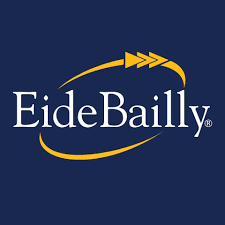McLellan: Narrow is pure gold

In last week’s column, I laid out the argument that marketing has shifted to a trust-based authority positioning. There’s plenty of data to support the idea that because of their skeptical nature, consumers had made it clear they didn’t want to be sold to anymore.
Instead, the idea of brands elevating subject-matter experts and allowing them to genuinely help the consumer from their vantage point as an expert or authority seems to be a much more effective strategy.
There are some nonnegotiables to building this authority position within your organization. The first is that a company cannot be an authority.
An entity is not a subject-matter expert, but its key people can be. For most small to midsize organizations, this role is usually taken on by the owner. The logic behind this is simple. The last thing in the world you want to do is invest time and resources into making an employee your camera-ready authority, only to have them (and their reputation as an authority) be usurped by a competitor who lures that employee away from you.
Another absolute for adopting an authority position strategy is that no one is an expert in everything.
When you think of someone you’d refer to as an authority, odds are they are an authority on X, Y or Z but rarely more than one of the three.
It’s essential to recognize that the narrower your audience, the better. It allows you to be quickly discovered and identified as someone your target audience needs to pay attention to, all because you’re speaking their language. Ultimately, this means you can build an audience much faster. Without an audience or anyone paying attention to you, your position holds little value. Once you’ve earned the audience, and you genuinely know them and what they need, you can provide additional value to them by creating the products and services they ask you to create.
It seems counterintuitive. Marketing has focused on quantity in terms of audience for a very long time. How many eyeballs, what’s the frequency and exposure? Many people believe that they need a massive audience to hit their sales and financial goals. But if 95% of those eyeballs can’t or won’t buy what we have to sell, how valuable are they? Modern marketing recognizes that it’s a quality game, not a quantity game. Most of us would prefer to invest our time and resources talking to the 1,000 people who are the perfect target for what we offer, as opposed to 10,000 people who will never be our customers.
And yet when it comes to our own marketing efforts, we often choose tactics that toss out a huge net, despite knowing that we’re going to have to sort and toss much of the catch before we get to something of value. Intellectually, we get it – and yet our choices and behaviors often suggest that we’re still focusing on quantity, not quality.
You don’t need to speak at 50 conferences to have someone walk up and ask you some questions that lead to a sale. And you don’t need to be on the best-sellers list to use your subject-matter expert’s book as a fantastic business development tool.
When a company homes in on just their specific audience and ignores the rest of the world (remember, one of the traits of an authority is that most people couldn’t care less about their content), and ignores the rest of the world – the audience does lean in. They do ask questions, and they will eventually put you on a shortlist of providers to consider.
And when you do it exceptionally well, you will be the only provider they consider.










